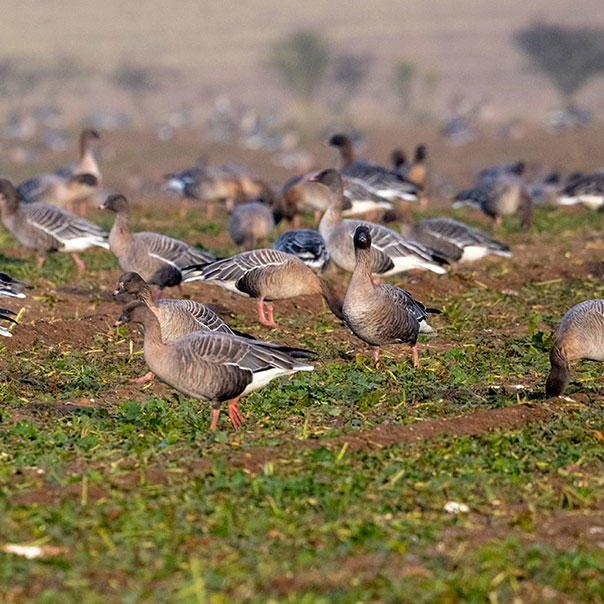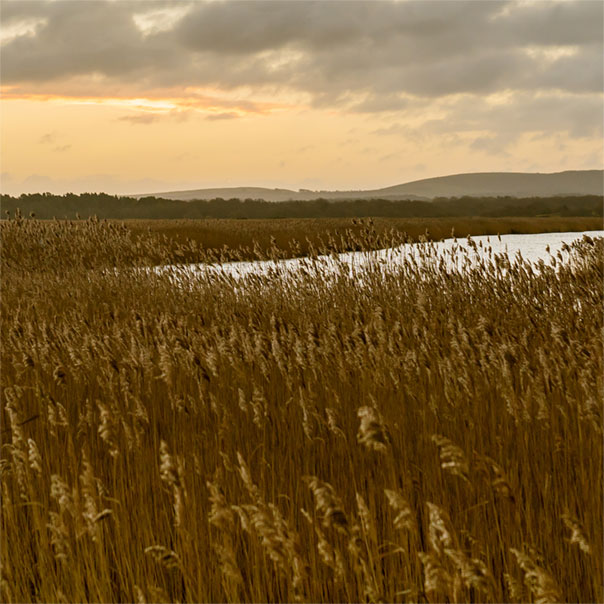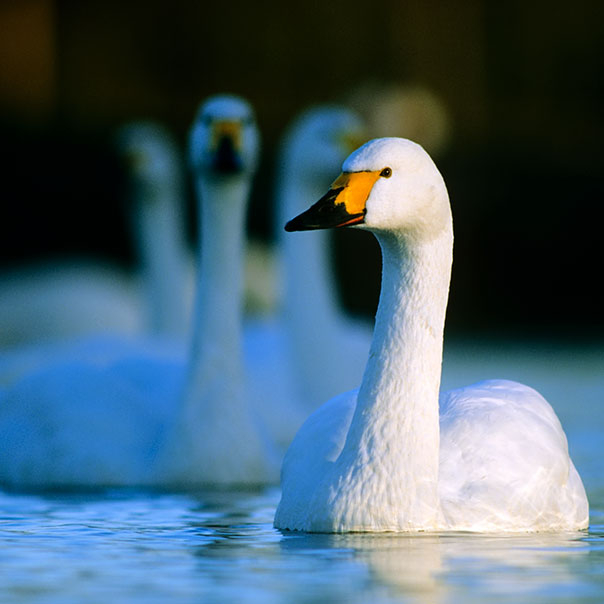Wetland wildlife in November
As the golden days of autumn fade to winter, the last of our long-distance migrants are arriving from their breeding grounds in the high arctic, escaping the cold.
Other birds such as raptors, water rail and bittern are also now more likely to be seen, whereas amphibians stow themselves away.
Swans and geese appearing
Whilst some late whooper swans will continue to come in from Iceland, early November heralds the arrival of the Bewick’s swans from arctic Russia. With a dainty black and yellow bill and soft bugling call, they’re the smallest swan species that we see in the UK. But they fly the furthest to get here, travelling thousands of miles across Europe. Many will make landfall at WWT Welney, but others will continue on to WWT Slimbridge. Researchers here continue to observe individual birds coming back year after year, identified by their unique bill pattern.
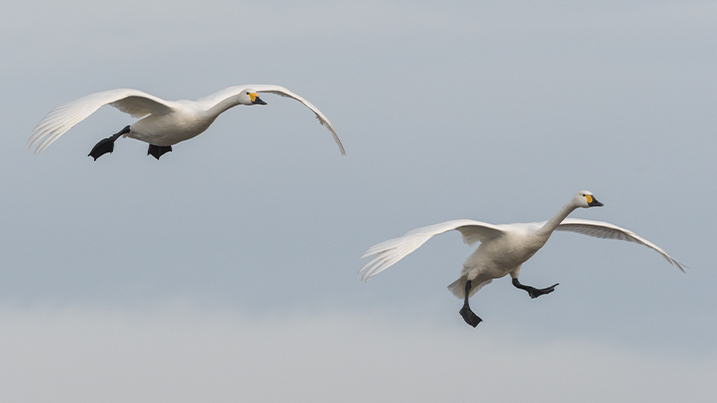
November brings some larger goose species to our shores, compared to those we started to see arriving back in October. They’re all large, grey geese of the Anser genus; Russian and Greenland white-fronted geese that will arrive from their respective breeding grounds, noticeable amongst the other grey geese for their white foreheads. Tundra and Taiga bean geese will also be arriving from Russia, darker in colour than other geese in this family and with just a partly orange bill.
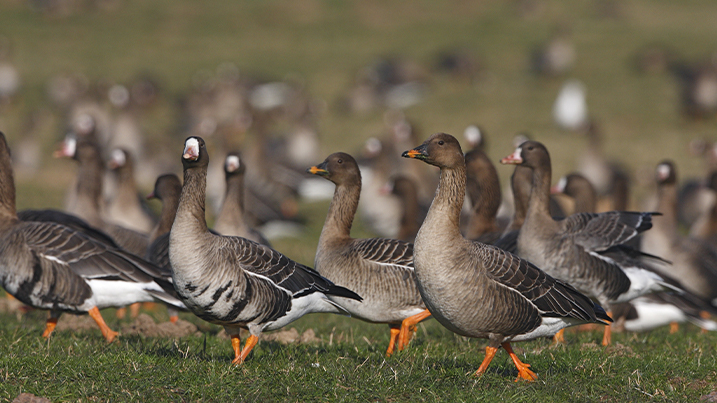
Return of the raptors
Raptors also gather at wetlands in the winter to take advantage of the plentiful food source that the habitat provides. Some might be UK breeding birds that have travelled just a short distance. But others could be Scandinavian breeders who have made the sea crossing. Species to look out for include; marsh and hen harriers, peregrine, merlin and short-eared owl. They’ll all utilise a range of habitats, such as reedbeds, saltmarshes, open estuaries and wet grassland to find a variety of prey.
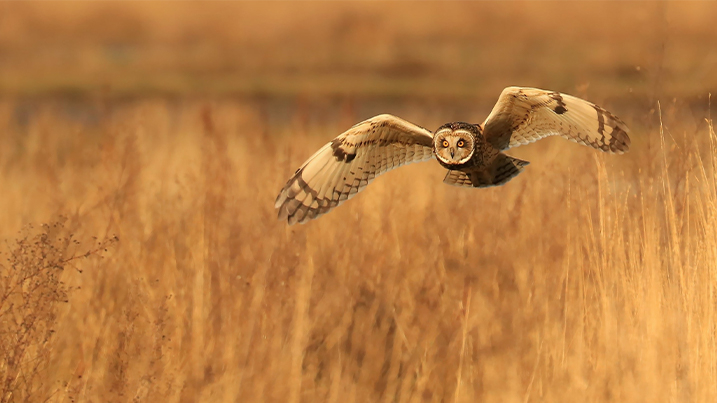
‘Au revoir’ to our cold-blooded creatures
With shorter days and lower temperatures, our toads, frogs and newts will be hibernating in soil, and under rocks, woodpiles and leaves. Many will remain here until February. However, some, especially during milder winter weather, will emerge for periods to feed. You might even notice newts and frogs hibernating at the bottom of ponds, where they can remain for months at a time if oxygen levels are high enough.
We’re also now into the last period that dragonflies can be seen. As in October, it’s still the late species such as common darter that will be on the wing. It’s thought lack of small insect prey is the main cause for their eventual demise, rather than colder temperatures.
Amongst the reeds
It’s a good time of year to try your luck spotting our reedbed residents. The first, you’ll notice from their explosive song is the Cetti’s warbler. It usually remains hidden in thick cover, but be patient and you might get a brief view. Another bird that is heard during winter but rarely seen is the water rail. A relative of moorhens and coots, you might hear their pig-like squeal as it picks its way around the bottom of reedbeds searching for food. You’ll only see them when they pop out into the open and glimpses are often fleeting. Trickier still is the bittern; they won’t be booming at this time of year, so you’ve really just got to hope they choose to spend a little time where you can spot them.
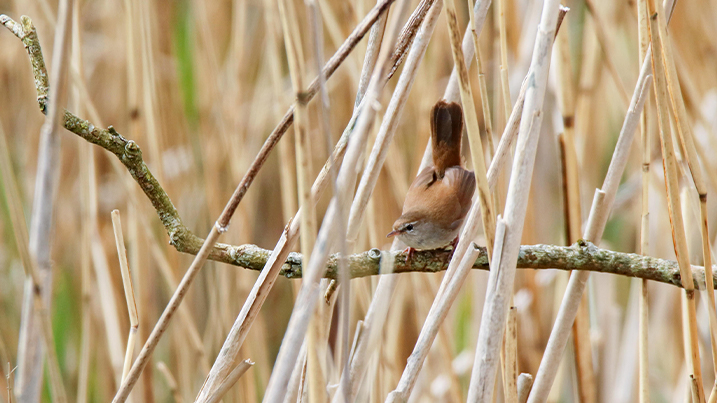
Where to see November wildlife
Whooper swans can be seen at WWT Caerlaverock, Martin Mere and Welney, whilst Bewick’s swans can be seen at Slimbridge and Welney.
Russian white-fronted geese are mostly seen in southern and eastern England, whereas Greenland white-fronted geese are mostly seen in Ireland and western Scotland. Bean geese are a scarce visitor to the UK, but will most likely turn up in eastern areas.
All of the above raptor species could turn up across the UK in winter, as can the water rail. Bittern can also be seen anywhere there are extensive reedbeds, with the Cetti’s warbler being commoner in more southerly areas.
Common darter dragonfly is common across the UK until early winter.
Find your nearest WWT wetland siteDecember
Next time, we’ll be into December, with large flocks of wintering bird species on display and short, crisp days in which to enjoy them.
Wetland wildlife in DecemberSupport from players of People's Postcode Lottery helps us care for our reserves and protect amazing wetland wildlife.

